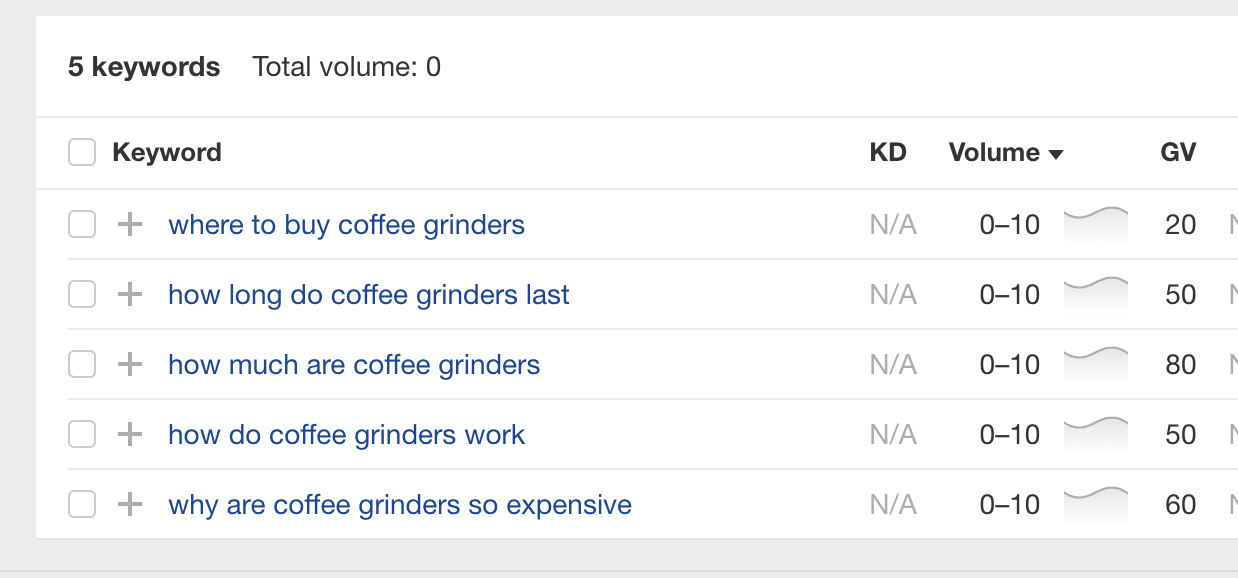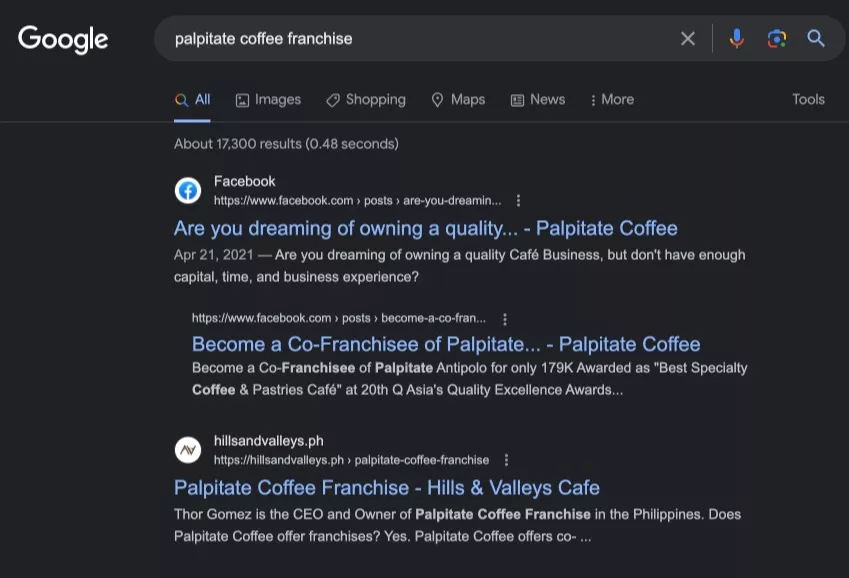by Venchito Tampon Jr | Last Updated on July 22, 2023
The ability to gain high-impact results from low-hanging fruits sets an excellent bar for SEO professionals when servicing clients (or their in-house brands).
With SEO quick wins, you can prove search engine optimization for your client – social proof that it is a marketing channel worth investing in.
What is SEO quick wins?
SEO quick wins are immediate results that impact rankings and online revenue by implementing quick SEO changes to the website, either on its technical health, content, or links. By focusing on 20% (high-impact SEO tasks), you can gain 80% (superb results).
Here are some high-impact SEO techniques you can implement immediately on your site.
SEO Quick Wins: Low Hanging Fruits You Can Implement Immediately
1. Add internal links to improve lower page 1 ranking pages
Internal linking is an underrated SEO tactic for most SEO professionals. Since most of the SEO world focuses on link building (getting external links from other sites), internal linking is less likely to be appreciated.
By linking internally between your pages, you pass link power from one page to another, which gives the destination page a much more capability to rank higher for its target keyword.
This is especially true if you have a big website with strong domain authority. All you need to do is to execute an internal linking strategy and see a quick ranking performance for your most important pages.
How to do it?
Step 1: Find pages sitting on lower page 1 or 2 rankings.
You can find low-hanging fruits from pages already ranking on lower page 1 or page 2.
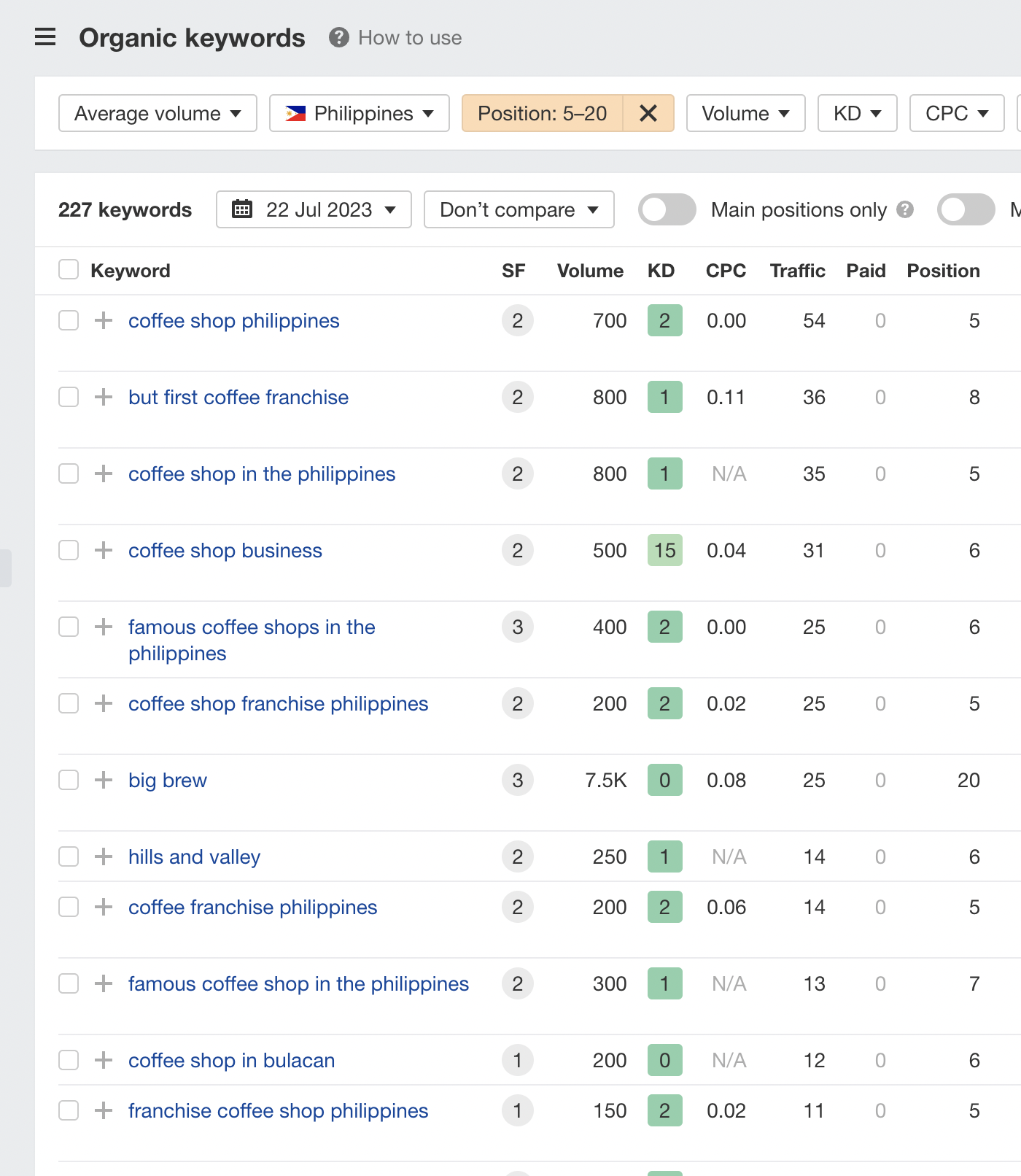
You want to boost the pages’ rankings and get the most clicks by ranking on the first three spots of search engine results pages (SERPs).
Step 2: Include internal links on your top linking pages.
Find blog content with the highest number of inbound links. You can use Ahrefs’ Best by Links to use these informational pages.
Edit those content and include internal links to your money pages.
Do more internal linking. Find other relevant content using the site search operator on Google and see which blog content you can quickly edit to add internal links.
2. Capture traffic from long tail keywords.
Long tail keywords are three or more words but have lower keyword difficulty than fat head terms.
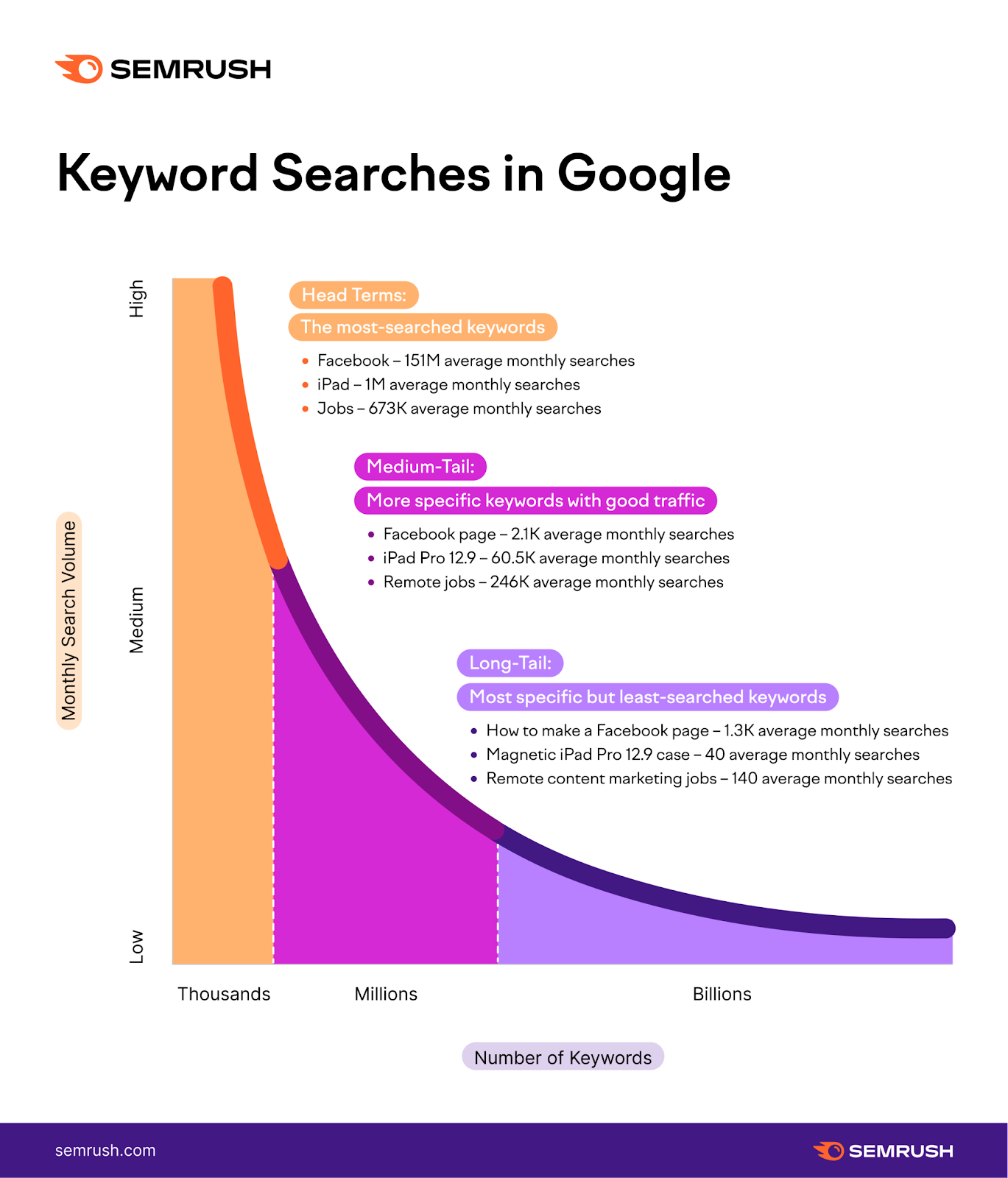
One mistake most starting SEOs make is targeting highly competitive keywords with their SEO campaigns, particularly with newly built websites.
Essentially, Google would want to reward sites with thousands of quality pages that have established trust and topical authority deserving to rank for their fat head industry terms.
It is best to find long-tail keywords that don’t have much competition but are driving specific visitors to your website.
For instance, if you’re running an eCommerce store, don’t neglect long-tail commercial keywords that can bring highly targeted ready-to-buy customers (e.g., dual boiler espresso machines). They may only have ten or fewer monthly search demands, but you could easily rank #1 for this keyword.
Compared to optimizing your website for only one head term, that would take you years of trying to dominate at least the first page on search engine results pages (SERPs).
I’ve been doing SEO for a coffee and tea supplies eCommerce brand and have successfully generated targeted website traffic weeks after its launch.
I created landing pages for different long tail keywords about our selling products’ sizes, types, and layers (i.e., espresso machines).
So we’ve had different collection pages for these keywords:
- Dual boiler espresso machines
- Single group espresso machines
- 2 group espresso machines
- Commercial espresso machines
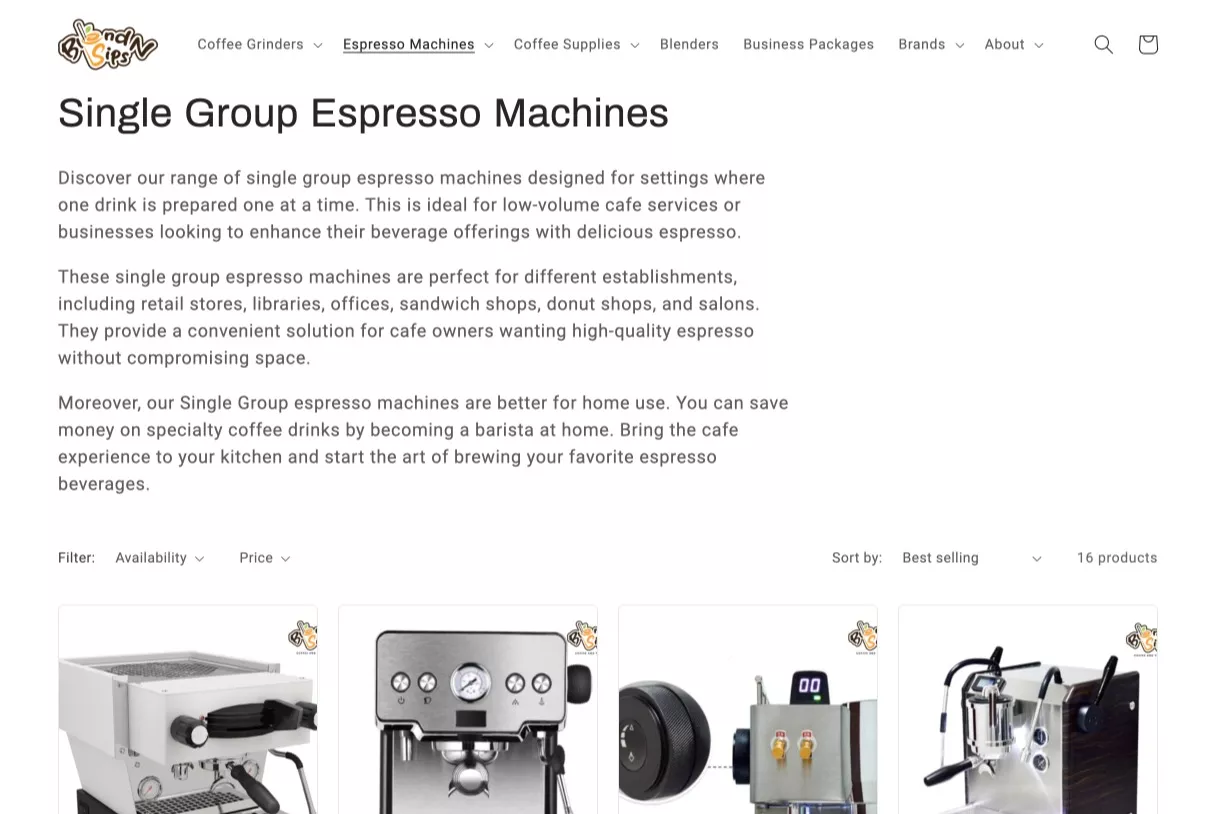
The best thing when you target long tail keywords is that it is so easy to rank with fewer or zero links, regardless if your website doesn’t have much domain authority.
3. Publish blog content to build topical authority
How content marketing is perceived as part of the entire marketing strategy hasn’t changed at its core.
Content marketing assists in driving relevant, targeted traffic to the website. You make your brand more visible to potential customers by ranking blog content for their informational keywords.
Google won’t understand your site unless you give it the proper context and content theme. Publishing more blog content on a specific topic cluster gives search engines semantic signals about your site.
More blog content could help you establish yourself as a topical authority, thus, allowing you to rank for more competitive keywords.
One of the SEO quick wins to build topical authority is answering questions about the product/s you’re selling.
For instance, if you’re selling “espresso machines”, you publish blog content about:
- can espresso machines make regular coffee?
- how long do espresso machines last
- where to buy espresso machines
By publishing these content assets with internal links to your category page (i.e.,/collections/espresso-machines/), you drive more awareness from your customers about your products while establishing the topical authority of your brand.
First, find keywords related to the specific product category you’re trying to rank for.
You can use Ahrefs’ Keyword Explorer to find questions related to your commercial keyword:
Answer The Public is a great way to source out queries related to your category page.
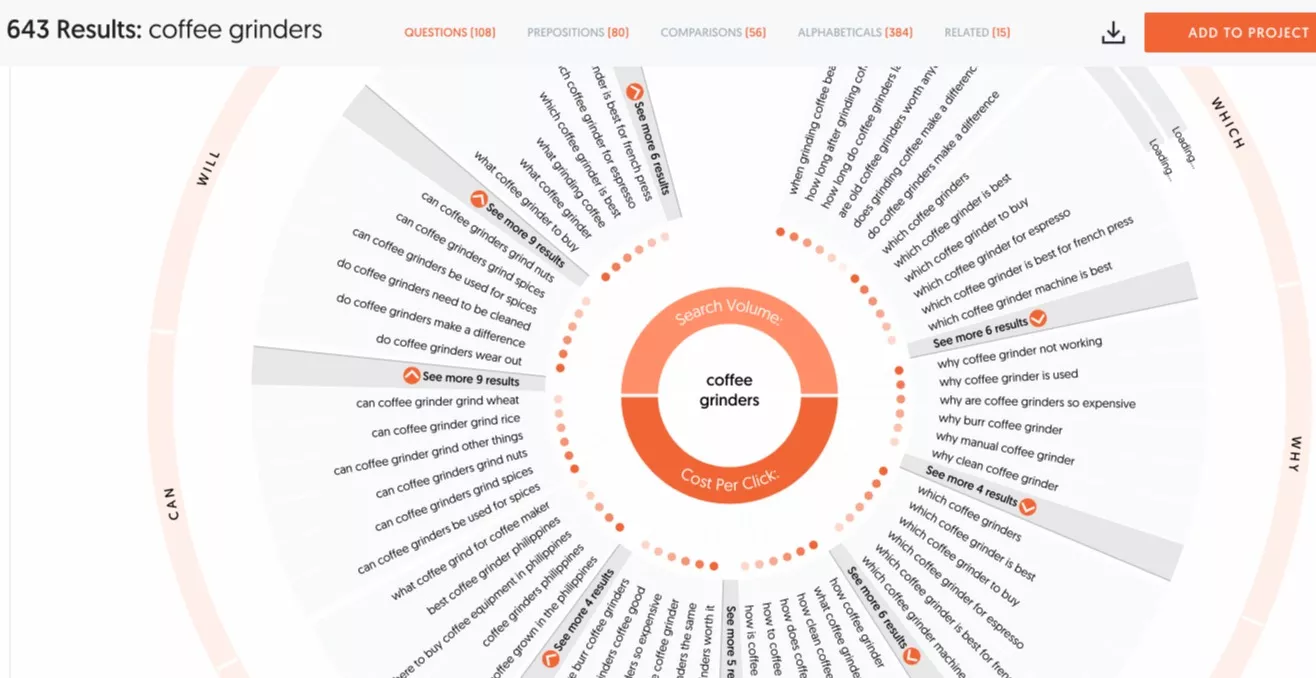
You won’t find most of these questions to have a high search volume, but they all give context to your site. Like what Koray Tuğberk said in his interview at Matt Diggity’s Youtube channel, you connect semantic points within your subject theme by writing topics even without much search volume.
4. Steal competitors’ search traffic.
If you’re doing SEO for new websites, it’s not easy to rank for your target keywords and garner traffic (Google Sandbox), as you’ll have to wait for a few months for Google to trust your site and make it deserving to rank for your target keywords.
One way to get relevant traffic is to steal visitors who’re going after your competitors’ brand names.
For instance, I’ve recently published several alternative pages for our coffee shop franchise.
Instead of solely ranking for coffee franchises, we researched specific coffee brands aspiring business owners want to franchise with.
We’ve got the list ready with Ahrefs and quickly publish “alternative pages” targeting each branded keyword.
We included enough information about our competitors’ franchises and even added FAQs to answer common questions related to the search query. Through this, we could rank better for the keyword.
The good thing with alternative pages is we can drive awareness and potential conversions by writing a section about our offer, with the angle of giving another (alternative) option for potential franchisees.
We quickly rank for competitors’ keywords (page 1) after days of publishing it.
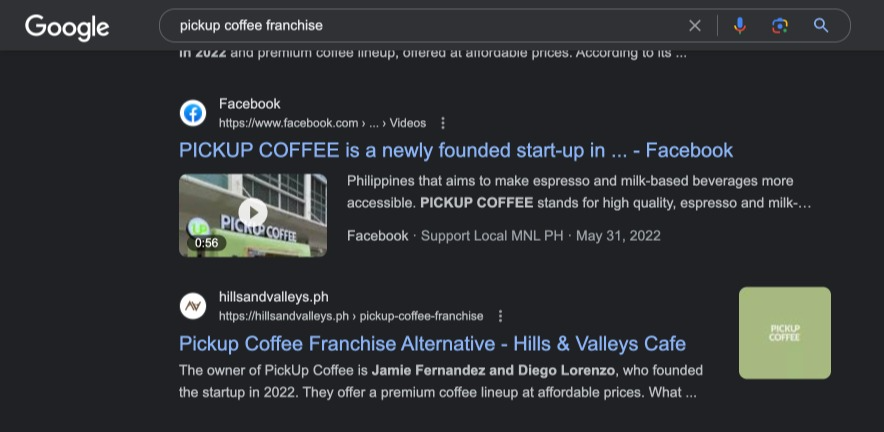
Interestingly, we have competitors that don’t have websites yet, and we’re not capturing most of the traffic they should be the ones getting in the first place.
5. Reoptimize content for newly discovered keywords.
SEO is continuously optimizing content to rank #1 (if you’re not hitting the spot) or simply sustaining your rankings by maintaining it.
One of the high-impact SEO tests you can do is discover new keywords you can target with your existing content.
How to reoptimize content for new keywords?
I use Google Search Console to identify queries for which my pages rank manually, but I need optimization.
Search Console > Search Analytics > Click on Pages’ Filter > Click a Page > Choose on Queries’ filter.
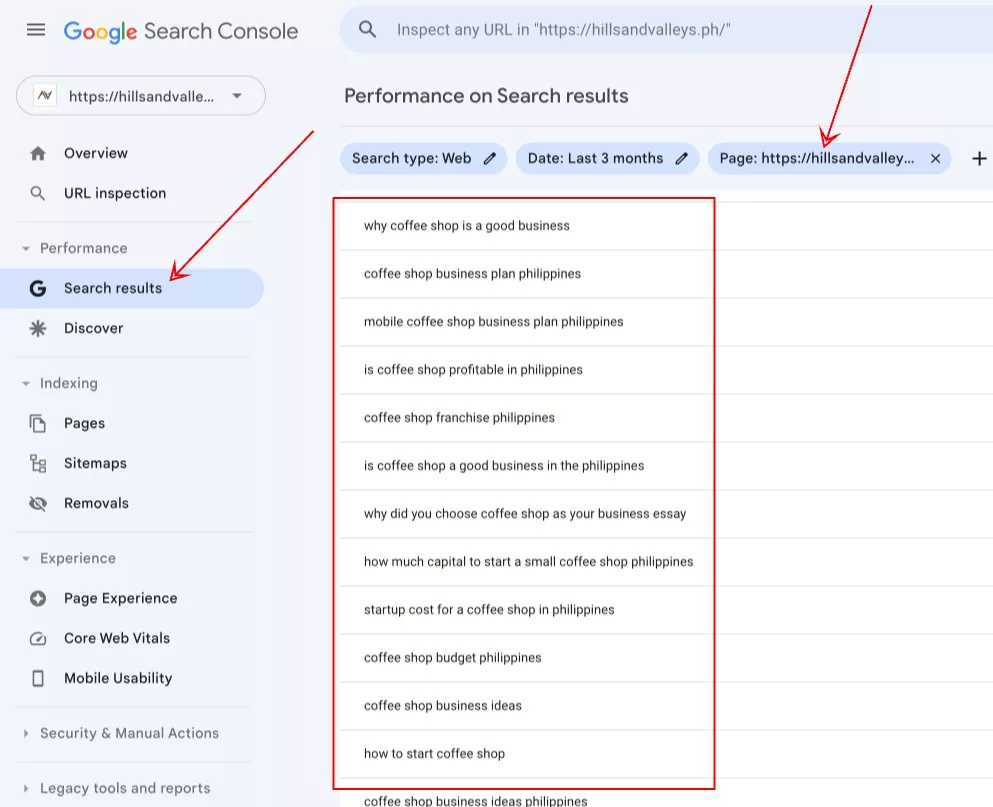
Once I’ve determined which queries deserve optimizations, I can choose from any of the following content optimization methods:
- Provide logical and accurate answers to these queries.
- Give the best definition to “what is” queries to steal paragraph snippets.
- Add LSI keywords to your title tags from newly discovered queries. For instance, words like “template”, or “guide” could help your page get more visibility for those search queries.
6. Reverse SEO outreach
Link building is a tedious task, mainly requiring manual outreach initiatives. It is a numbers game that even the most experienced SEOs need help to secure links for their clients.
While the era of sending outreach emails is still at its peak, many content publishing sites divert their attention into publishing linkable assets that are likely to attract natural links via ranking for informational keywords.
I’ve covered this in my SEO outreach guide, where the proposition isn’t just sending outreach emails to land contextual links but publishing solid content assets that can earn passive links.
Here are a few steps to do reverse SEO outreach:
Step 1: Find topics or informational queries other content publishers are searching for.
Other SEO content creators call it “referential keywords”, where bloggers, journalists, and content publishers use these queries when looking for references or additional resources for their content (i.e., news stories).
You can use Ahrefs’ Keyword Explorer to find referential topics in your space. Use terms like “template”, “statistics”, or “data” plus your topic of choice.
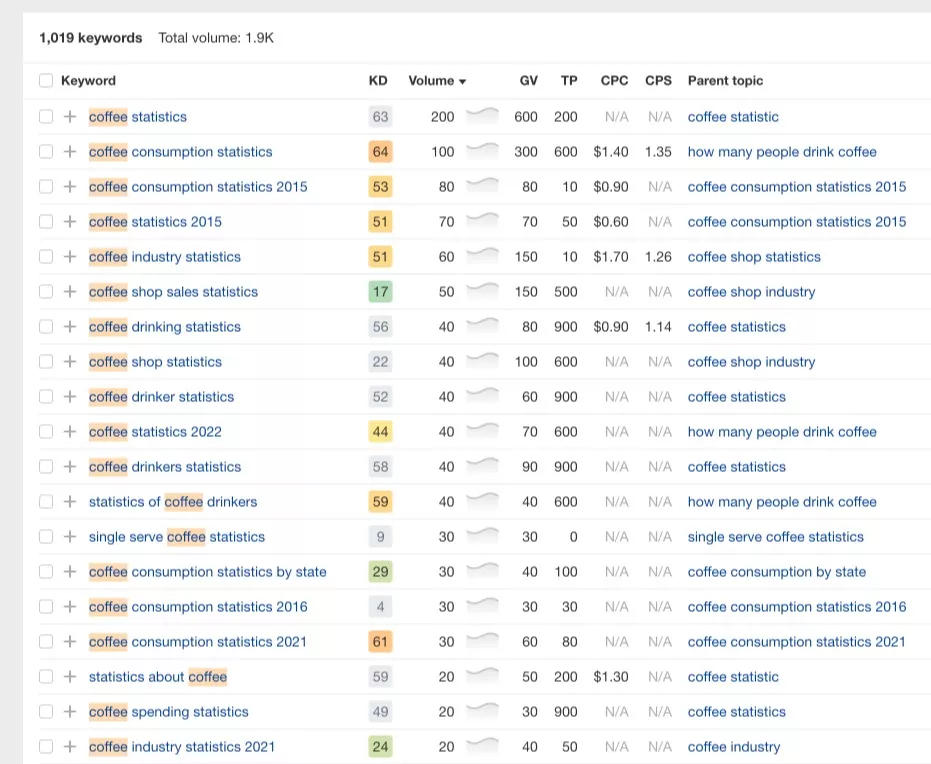
Step 2: Create a linkable asset and improve its rankings through internal linking.
If you’ve got a high-authority site, you can leverage internal links to push your linkable asset to the top spot.
Find top-linked pages on your site and include internal links to your linkable asset.
Acquiring editorial links pointing to your referential page from other external content, such as guest posts, is best.
7. Publish new pages for keywords you can’t rank 50 to 100 position.
If your blog content performs well on search engine results pages (SERPs), it ranks for multiple topically-relevant keywords.
An average SEO would assume the page tends to rank #1 or even just page 1 for all these keywords.
Reality: You won’t rank for some keywords because each search query entails a different satisfaction for its user.
There are specific keywords with ranking “list pages”, while other search queries tend to lean on specific product pages.
While you can do complete on page optimization, proper internal linking, and acquire as many inbound links for the page, it won’t rank simply because the search query is satisfied with a different intent, and it needs a whole new page that only discusses the topic.
How to maximize these new keyword opportunities?
Your initial step could be to look for all the keywords your best pages currently rank for positions #50 to #100. This means Google sees the page as relevant to the search query but won’t intend to rank it for the reasons I mentioned earlier.
You can use Ahrefs’ Site Explorer to find keywords your page is ranking from position #50 to #100.
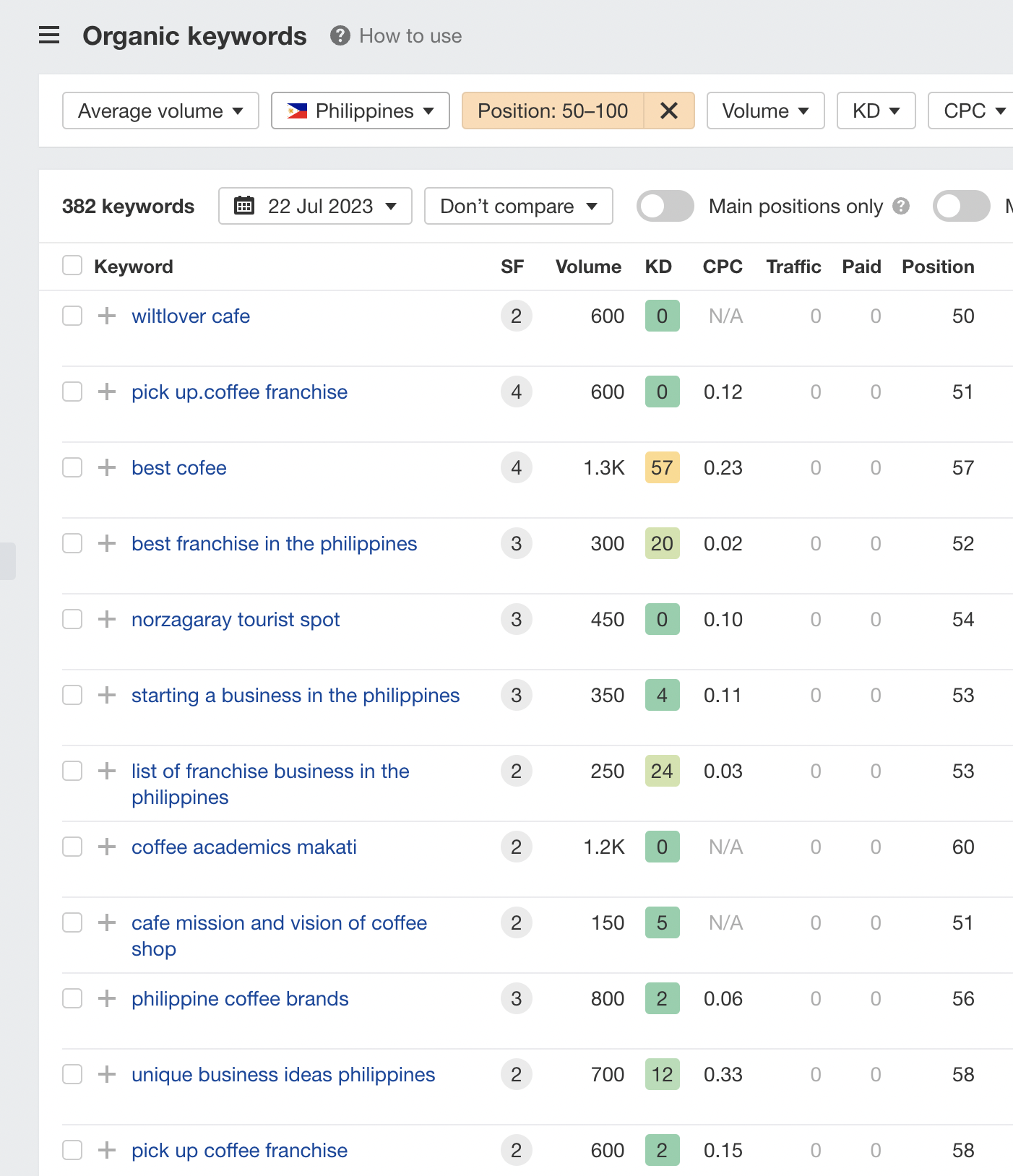
You can also use Google Search Console for this process.
Performance – Search Results – Pages – Queries – Rows per page (100)
Assess if you need to include an additional section or text to your existing page to make it deserving to also rank for this newly found keyword or if you would need an entirely new page for the topic alone.
For instance, I use this process to find keywords in my coffee shop business guide where it gets visibility (impressions) but aren’t getting many clicks from searchers.
I went to Google search, assessed the top rankings pages, and saw what pages are currently ranking for. This gave me an idea of the type of page I should create new or a specific section I could add to my existing page.
For example, “How much capital to start a coffee business” may need an entirely new article to publish, which I could use as a supporting page to my parent topic, “coffee shop business”. Build more topical authority by internally linking the supporting page to the parent page.
8. Add rich content to category pages.
Most eCommerce category pages serve only as product listing pages that don’t have much content that search engines would use as semantic signals to determine the context of those pages.
One best way to rank your category (collection pages for Shopify) is to add at least 500 words of rich content.
A short description before the product listing describes what the collection page is about. And below the product listings, sections you can use to add content that can help increase conversions.
One example is answering objections and questions your target customers constantly have about the products.
You can also include FAQs (Frequently Asked Questions) and answer them with direct answers. This would also help your category page to steal some of the featured snippets available for long-tail commercial keywords.
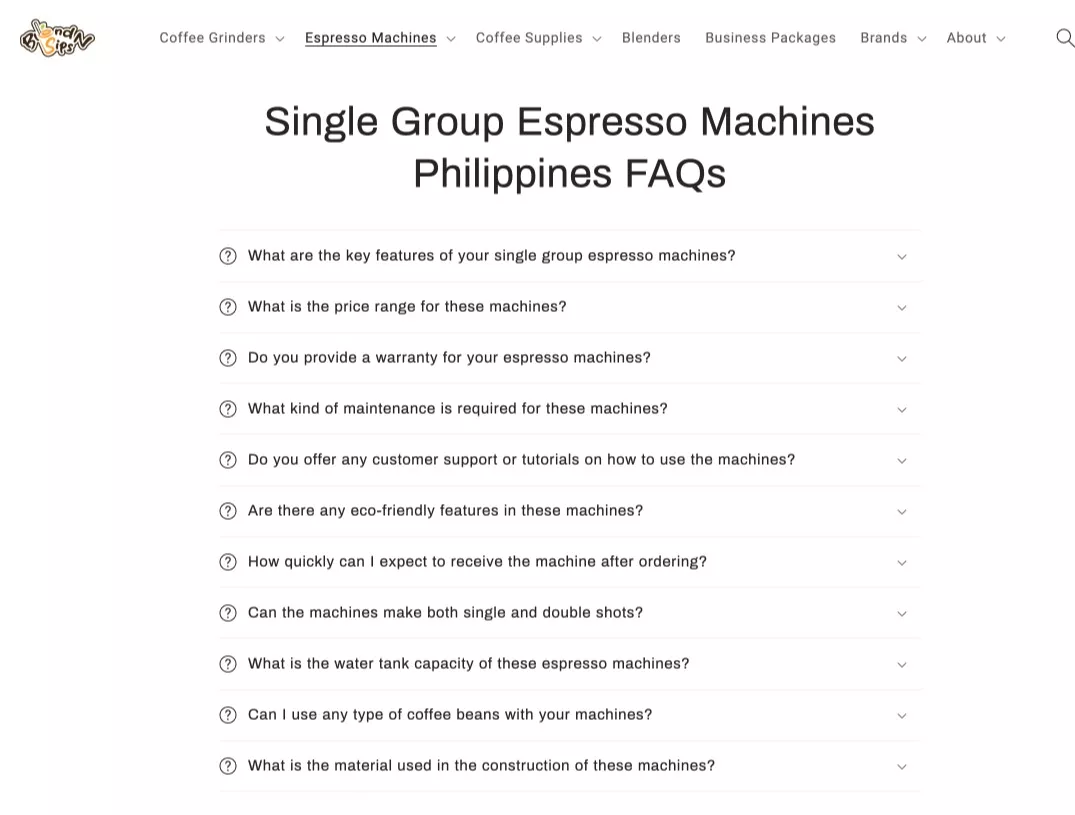
By making your page rich in content, you build the site’s topical authority and help Google better understand your content theme, thus giving you the advantage of ranking quickly for more competitive commercial keywords.
9. Scale link acquisition through active industry authors.
Relationship building is an integral part of any link building campaign. By strengthening connections with like-minded individuals, thought-leaders, and industry personalities, you can gain a cumulative advantage in acquiring brand mentions and links from higher authority sites.
Engaging with active industry authors is one of the best ways to scale up link acquisition. These are content contributors to multiple websites with established author portfolios, recognizable to the publications and audiences they served with their content.
You can find these active guest bloggers and ask if they want to collaborate with you for a mutual partnership agreement.
Offer a substantial opportunity so that both parties can get links for their websites. You include contextual links on your future guest posts and other websites, pointing to the guest blogger’s client site. While the active author would give links to your website from their future guest posts.
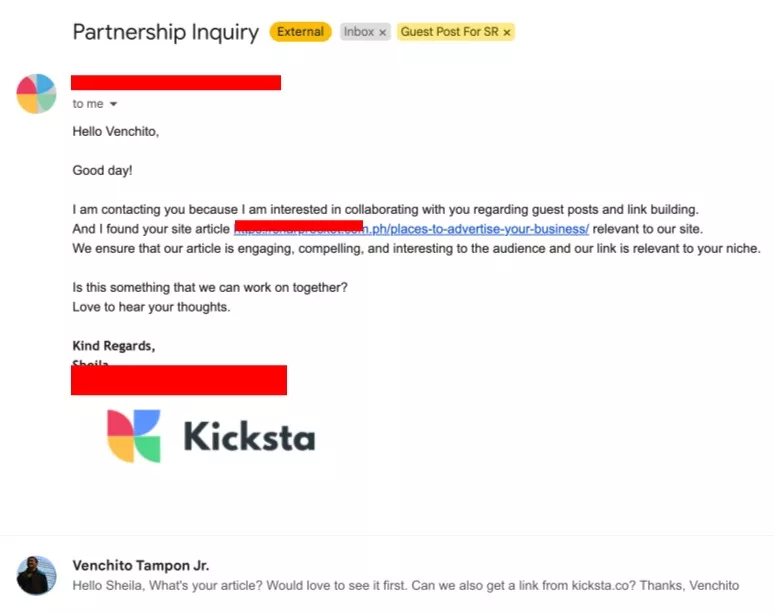
Exchanging contacts with a list of sites from which you have benefited can help leverage existing partnerships in scaling content-based link building.
10. Rank content for People Also Asked Questions
Blog posts are the easiest way to get SEO quick wins. By publishing informational content to answer commonly asked questions related to your product or service, you can initially rank for long-tail queries in your industry.
PAA (People Also Asked) questions can be found using Ahrefs’ Keyword Explorer – Questions.
You may use SearchResponse to collect questions relevant to your topic and see them ranked based on popularity.
There is also a ChatGPT-generated tool to give you the top PAA for a particular search query, along with the automated answers but on its improved version. See this StreamLit PAA tool.
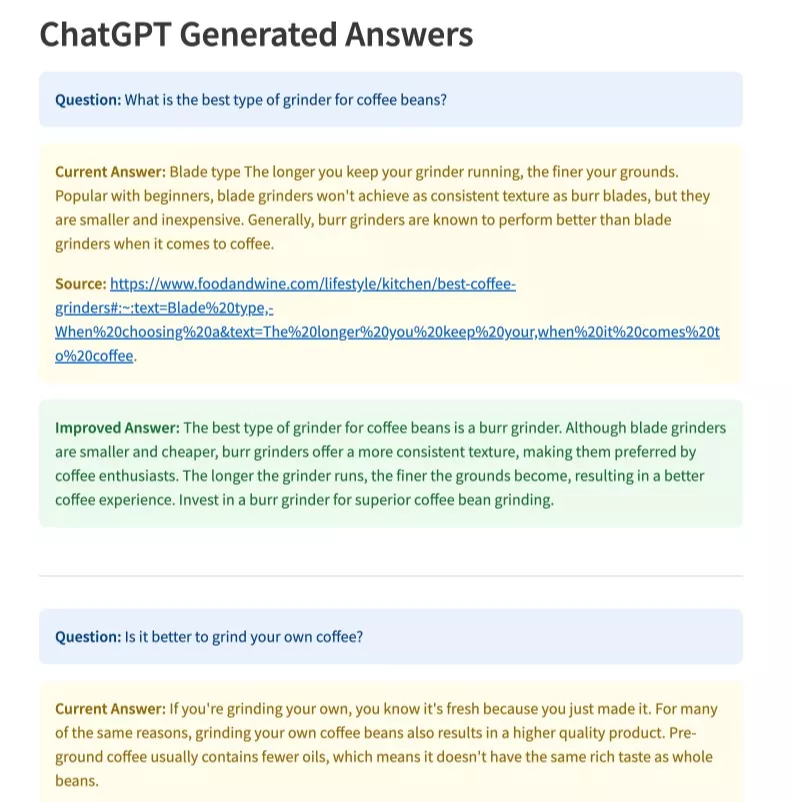
Final Thoughts
By focusing on SEO quick wins, you’ll gain initial significant results for your SEO campaign. You can make results for your clients without relying too much on substantial resources or budgets.
Do you want to scale organic traffic? Contact SharpRocket to learn more about SEO services, link building services, and content marketing services.
SEO Quick Wins FAQs
What are quick wins in SEO?
Quick wins in SEO refer to optimizing existing pages and creating new, SEO-optimized pages to achieve maximum impact. Focusing on both aspects can improve your website’s visibility and rankings in search engine results pages. Implementing these strategies will help you quickly gain traction in your SEO efforts.
How can I get SEO results fast?
To get SEO results fast, you should implement these 15 quick SEO wins. By optimizing your website, improving site speed, conducting keyword research, creating high-quality content, and building quality backlinks, you can rank higher on search engines and drive more traffic to your site.
What are the top 3 SEO strategies?
The top 3 SEO strategies are keyword research, content marketing, and on-page SEO. These strategies will improve your website’s visibility and organic rankings. You can enhance your website’s performance and attract more organic traffic by conducting thorough keyword research, creating valuable content, and optimizing your website elements. Consider these strategies to boost your SEO efforts.
Does SEO show quick results for a business?
SEO is a long-term strategy that usually takes 3–6 months to yield noticeable results for a business. It’s important to remember that SEO is a continuous process that requires ongoing effort and optimization to maintain and improve search rankings. Patience and persistence are vital to seeing the full benefits of SEO for your business.
The Author
Venchito Tampon Jr
Venchito Tampon is a Filipino Motivational Speaker, Corporate Trainer, and a Leadership Speaker in the Philippines. He is the CEO and Co-Founder of SharpRocket, a link building agency. With a decade of experience, Venchito has a proven track record of leading hundreds of successful SEO (link builidng) campaigns across competitive industries like finance, B2B, legal, and SaaS. His expert advice as a link building expert has been featured in renowned publications such as Semrush, Ahrefs, Huffington Post and Forbes. He is also an international SEO spoken and has delivered talks in SEO Zraz, Asia Pacific Affiliate Summit in Singapore, and Search Marketing Summit in Sydney, Australia. Check out his other businesses, Hills & Valleys Cafe, Blend N Sips and Saas Pursuit.
How our LINK BUILDING AGENCY builds 250 links/mo consistently using Predictable Link Building Methodology™…
- Using a SIMPLE and PROVEN system
- Using a SCALABLE strategy
- No private blog networks
- No creepy outreach emails
